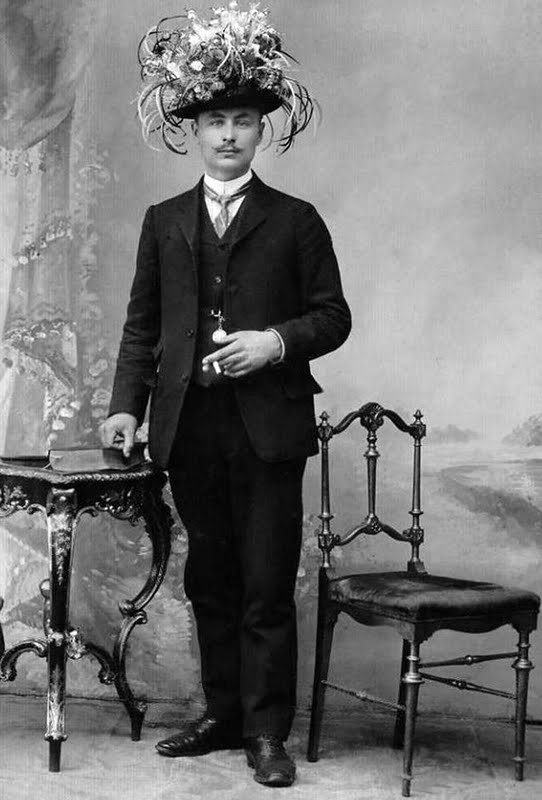
Faux pas: a slip or blunder in etiquette, manners, or conduct; an embarrassing social blunder or indiscretion.
Just because you find historically documented proof of something being from the past, be it a dressmaking technique, hair style, manner of speaking, etc., doesn’t mean you *should* use it in your costuming.
I mean, really, do we *want* a corset line under our dresses? Do we want a saggy bag of a dress hanging from our shoulders? Do we want to jump off the same cliff as Bella?
Think back to your younger years. What was the fashion? How about the hair? Would you want to wear those things again? Like, wear them exactly as you did before? Or improve on them with what’s available today?
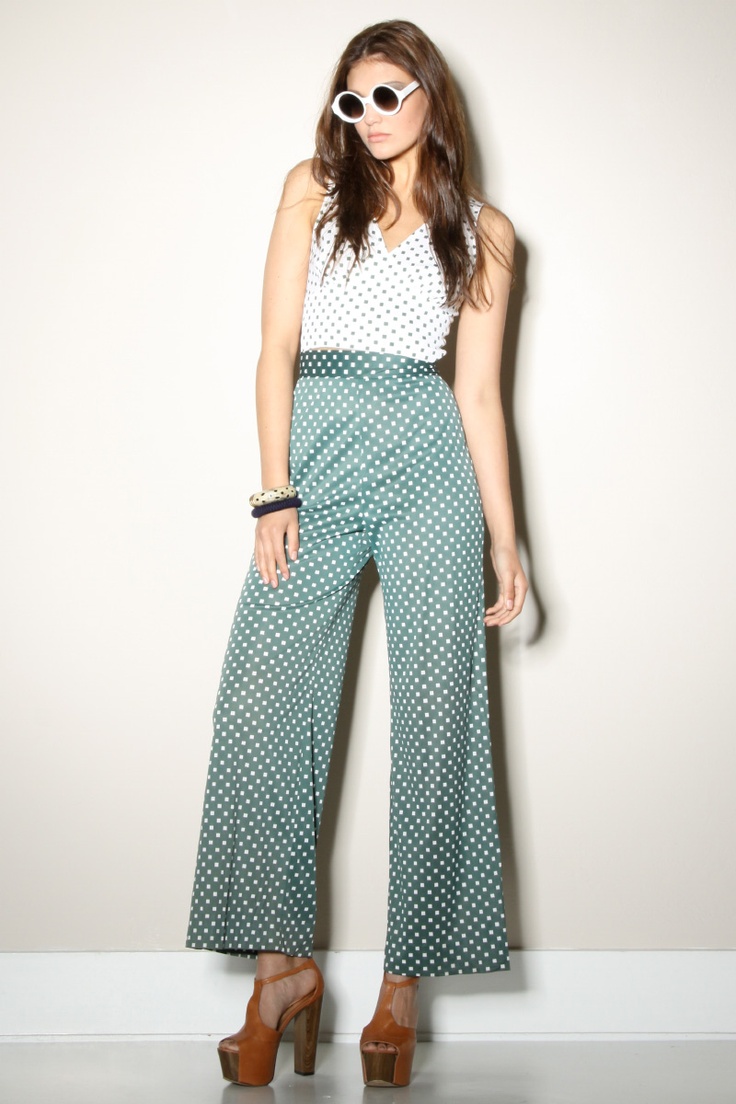
It’s like how the 1970s and 1980s fashions are being repeated in current fashion trends. Modern fashion designers aren’t trying to duplicate the originals exactly. They tweak and use contemporary materials and fit. Of course it is fashion repeating itself.
This IS and IS NOT what we are trying to do in our hobby of historical costuming. Those of us who adore fashions of the past want to duplicate them. To bring them to life because we LOVE them. In.every.minute.detail.
Others of us simply dream of the past and create those dresses and undergarments and other beautiful things we love through our sewing because we figure that’s as close as we’re gonna get to the romantic past.
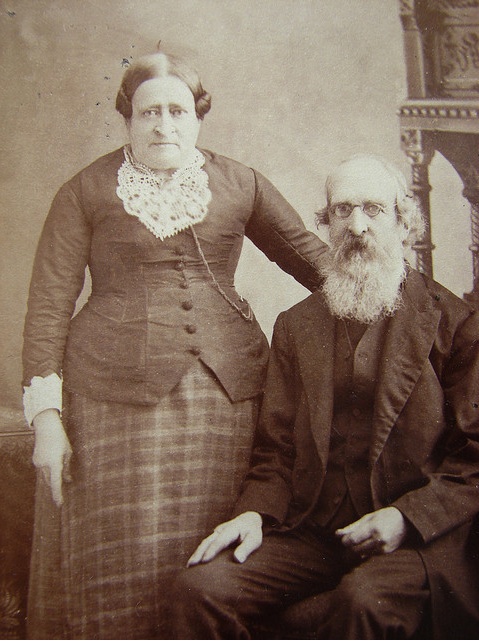
However, in our re-creations we don’t always duplicate exactly what we see in historical proofs. Try as we might, we can’t be just like them. No, we take what appeals to us and translate that through our 21st century eyes.
It gets us thinking: do I really want that frizzy hair I see in the photograph? How exactly will a 2″ wide Regency bodice look flattering on this body… even with period shaped undergarments?
We dissect our inspiration then churn it out in some form that represents US – who we are today, in this month, in this year. Those of you who work hard to get as historically accurate as possible do it too.
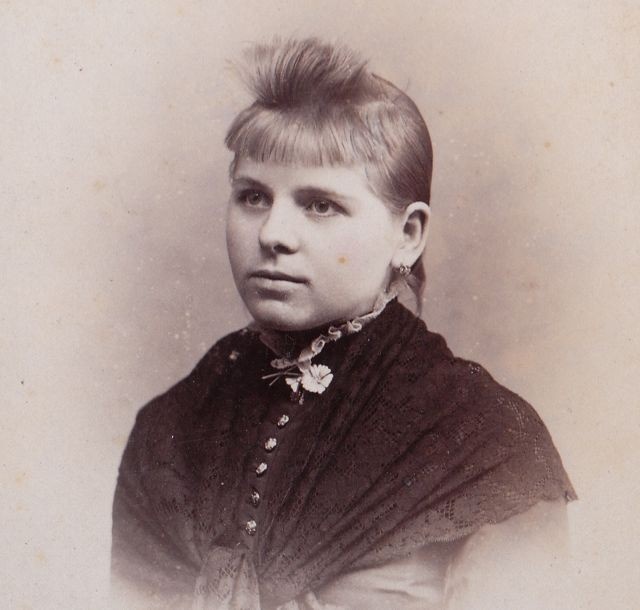
So what happens when y0u find that side hair part in a 1860s portrait? Do you say “Ha! There’s the proof that it was done!” Then you fly with abandon in promoting it because you found ONE photo.
Sure, it’s proof enough that it was done. But say 200 years from now someone stumbles upon a photo of a guy wearing a tailored Armani suit with a 9″ pink Mohawk. If they are re-creating early 21st C. apparel would you want them to dress as such and say it was the fashion because they found, again, ONE photo?
Probably not.
In studying the past we must remember we look on their society as a whole. What was the norm? What was the general appearance? As humans we want to belong. Following the general path that most people are on is what we naturally do.
Then as we dig down deeper into our research we find those oddities. The side part. The un-corseted lady. The deep V neckline in winter. That’s where the connection to the past lives. And the question of “Why did they do that?” can be answered simply with “personal expression.”
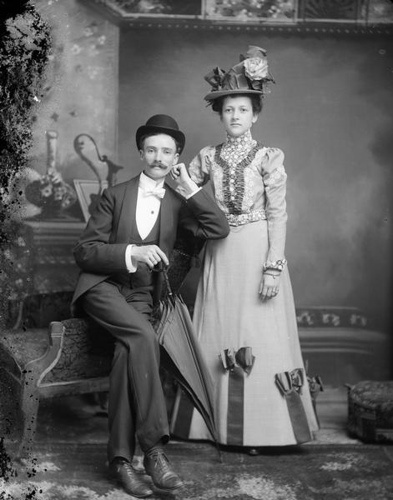
It is my belief to draw from and replicate the “general” fashion styles we find for our chosen time period. Why? Because we are representing their society as a whole at a specific point in history. Even if we are selecting a very particular part of the world – e.g. Pennsylvania Amish.
When we stray just a little with only one photo or extant garment as proof of a certain thing, it belittles their culture. At that point you are merely representing THAT person. Which isn’t to say it’s a bad thing, just not that it should be shown as the MAIN way of things.
To exemplify a trait, it is wise to gather several articles of proof before representing it to our own current society of what history looked like back then. With more than a few objects of proof, you give honor as a whole to our ancestors. And that, my friends, unites us through the ages. Even with all our individual personality quirks.

I agree with Arnie. I too do westward expansion era clothing, specifically late Victorian prairie/immigrant. Please remember, those old photographs were our ancestors in their Very Best clothing. Most of the women would get a new spring/summer dress or a fall/winter dress. The lucky one might get one for every season. The dress had to be made after your work was done, usually by lamp light. If it was a good season or you had a windfall, you might get to order one from the Sears catalog.
They found pictures of accessories in the women’s magazines that were passed around the entire community only after the original owner was done. A lot of them couldn’t read English or only a very little. The “doily” might have been her best attempt at recreating something she saw. With the busy lives and sheer labour of their daily tasks, kudos to her for even attempting the jabot to “fancy” up her best dress and make it go another season.
I look around my brightly lit sewing room, with my patterns, abundance of trimmings and supplies. Then I look at the portrait of Great Great Aunt Mary in her white lace gown from the early 1900s. I feel so proud of those who came before, dressed themselves and their families, made do or remade. They helped build homes, towns and a country.
Guess it was a long way to say it. I kind like the doily….. on her.
Love your interesting articles, I too find myself justifying what I want to wear by searching for pictures of certain styles. I used to grow my hair bangs (fringe) from January onward for the Llandudno Victorian Extravaganza, until I noticed a famous Money painting with a lady dressed beautifully and with a FRINGE! I am happy now to chop away to my hearts delight with proof , if necessary!
Having documented proof to back up our decisions is the best!
You can only be so accurate to a point. If I’m going to spend tons of time, money & energy on making a historical dress for myself– I’m going to put some accuracy to the side. I mean, I’m the one wearing the dress. I’m planning on taking advantage of my times’ techniques, materials and aesthetics to create a dress that would please me.
Some of the bustle dresses on Pinterest can be almost ugly due to the excessive amount of lace. Back in it’s day, the dress could have been the cat’s pajamas but now I want nothing more than for someone to take the lace off. I know it’s pretty and for the Victorians it was awesome to have lace EVERYWHERE but to me, it really makes a dress look “overdone”.
I sometimes wonder what historians WILL recreate when they look back at us…what documentation will get lost in a fire or other natural disaster? Which clothes will they see as our norm?
Neon colored fishtail skirts with chervon patterned off the shoulder blouses on slouched over, bow-legged, pigeon-toes heroin-dosed models with long hair in their faces.
*Sigh*
This is just my two cents, but I also disagree on some points.
I believe that going for accuracy is a good goal, but if you find yourself showing off a corset ridge or some hoops in your skirt, don’t shoot yourself down, and note to make it better next time! And regarding the finer things, the side part or the doily at the neck, I say go for ti if it feels right to you. Myself, I feel that a center part is not the most flattering hairstyle to my face, so where I can I’ll part it at the side instead.
I guess, it just boils down to personal preference. And then if you aren’t going for 99.99% accuracy then who cares anyway? 😛
I, too, agree and disagree with a few finer points of your discussion.
Those individual photos with oddities, prove that there were individuals… there were thinkers and tinkerers and ‘make do-ers’ and those- that no matter how hard they tried- would simply never fit properly into a given circumstance within society.
They prove that our ancestors had to struggle with the same types of issues that we do, and that we don’t have to fear or avoid a little individuality, despite that Victorian sense of rigid decorum… or the modern day ‘far bees.’
Being Human, is accurate, no matter what time in history we find ourselves.
For living historians in the plains, and southwest, we have to make do with a lot of imperfections, just out our ancestors did. As one who crochets and knits for costumes, I know that there are some fashion accessories, that I can re-create with absolute historically accuracy that would never sell to a modern customer- not even those who strive for the most accurate-as-possible costuming.
The beautiful crocheted lace Cravat [coughdoilycough] is just such an example. Now, that one is a much more individualized cravat, than most I’ve seen in photos, but it is- none the less- that last element of accuracy, that a modern woman would never wear on her historical costume.
Our social mores and fashion sense dictates that doily is a level of ostentation that is just plain silly, old fashioned and not at all attractive. Because of OUR trip through history, lace done in that manner, speaks very badly of the lady wearing it… even though it would be the final element of accuracy to an historical dress. We simply cannot escape our own history, to emulate that of our ancestors- with complete accuracy.
For those portraying the Westward expansion era and geography, we try to focus more on the Living and the Sacrifices when teaching our visitors and school children… the costume, just gets their attention, to hear the lessons. Fudging on the costume accuracy, I don’t believe, is such an insult to our ancestors… when we have those individual photos that show us, we are much more like them, in coping with life- than we realize. We honor them, just by taking the time and effort to study them and their living conditions.
Thank you for a lovely conversation starter.
I agree! We are VERY much like our not-so-distant ancestors. It truly is an honor that we can study their lives and blend their quirks with our own.
I both agree and disagree with you. I think that “one photo” can be all you need to do something that expresses YOU in your historical costume.
For me, for instance, it only took one portrait of one man to realize that there was, indeed, a way to get around my modern-day glasses that didn’t involve contact lenses I can’t wear. I absolutely have to have glasses or I can’t see to walk; I am functionally if not legally blind without them. Finding that just one guy in 1583 or whenever it was (I have the reference tucked away SOMEWHERE on my shelves) took the pincer-style reading glasses of the day and put ribbons on the frames to loop around the ears means that I have a period-accurate way to wear glasses, even if they wouldn’t have been COMMON. (Having the money and materials to make those period glasses is another story entirely…)
That doesn’t mean that I think you should take one photo of a side part and go crazy with it because you just don’t like center parts, or that you should make a corset off of a mid-Victorian patent because it looks cool (or, well, you can, but do THAT part for the challenge, not the reenacting!) Still, if you insist that you have to keep your costuming to precisely what the Mainstream wore, aren’t you then dishonoring those of your ancestors who WERE quirky and strange and wonderful?
I guess what I mean is, I feel that costuming should be guided first by what was POSSIBLE (no Lycra in the medieval period!), and THEN by what was LIKELY. But if you’re going to use something possible-but-not-likely, then you need to make sure your persona has really good reasons why, such as being blind as a bat, or belonging to a particular religious group with specific dress codes, etc., and make sure your WHOLE costume reflects that, not just one part.
Hear, hear! Very good thoughts indeed Varika.
This company do medieval glasses frames they also work for the Tudor period. Al you have to do is take them to your optomitrist and get the prescription lenses put in.
http://www.medievaldesign.com/english.asp
Thank you for this article!
I thought as I read your idea on the 1880’s couple with the lady wearing a doily, maybe she was feeling the need to compete with his beard. 😀
Thank you, again!
As I recall, back in the ’70s, those pants would have been almost touching the ground, covering the tick platform soles. We lived in horror of “floodwaters” — and would have added ribbons or other embellishments to the hems to make sure they were long enough.
Its funny. A lot of the time I think…’If I were me back in [inset year here] what would I wear? How would I solve that problem? Would I follow high fashion or just adapt what I had with a few tweaks?”
I go with it. And you know what after I’ve sewn it I start finding lots of images that support what I’ve done. IMO I think people in the past rather than looking back at photo’s going ‘they did it like this in the past so I must do it the same’ would have just tried to work stuff out with trial and error with the resources available. I don’t think the past is that much of a foreign country really. 😉
Disclaimer: I don’t do proper re-enacting. This is more…a hobby thing. My main era is 30’s/40’s so I can still ask those that were around then questions.
I love your webset and I wrote a essay today for my English clas (I am in 8th grade.) I love all of the costumes that you make and I with I can make things like you do, but I don’t know how to sew! I love you so much, I am very into the late 17th century to the early 20th century. Thank you so much!
Gracie